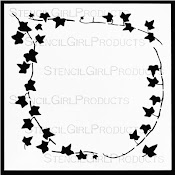StencilGirl Talk: Mary Beth Shaw's VLOG: March 2022
-
StencilGirl Talk: Mary Beth Shaw's VLOG: March 2022: Join Mary Beth in
Amsterdam and Paris! Click here for more information and registration!
Saturday, December 29, 2018
Wednesday, December 19, 2018
Sunday, December 16, 2018
Thursday, December 13, 2018
Monday, December 10, 2018
Sunday, December 9, 2018
Subscribe to:
Comments (Atom)




















































































